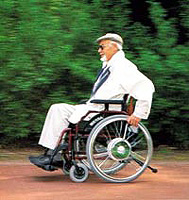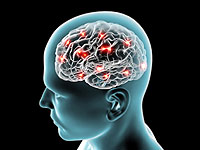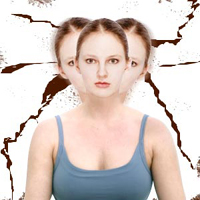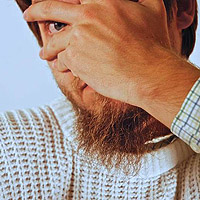What is paralysis? How Prally is manifested? What are parailences? Answers you will find in this article.
Content
None of these clinical types is an independent disease - this is a syndrome, the cause of which can be a variety of factors. Nevertheless, there are separate types of paralysis representing independent diseases. These include Parkinson's disease (tender paralysis), poliomyelitis (children's paralysis), Bella Paralysis, Bulbarium Paralysis, Pseudobulbar Palsy, Family periodic paralysis, paralysis due to lesions of shoulder plexus, children's cerebral palsy and many congenital or hereditary diseases.
Bulbarium paralysis happens sharp or progressive. Acute Bulbarium Palsy - one of the forms of polio. The disease amazes the oblongable brain and the bridge, especially the core of the bulbar nerves, which leads to paralysis of the language, lips, soft nose, larynx and pharynx. It begins, as a rule, suddenly from headache, dizziness, chills and fever, but without muscle pain. Pulse and breathing become arrhythmic. The voice acquires a nasal shade, we are taking an inseparable, the patient is not able to keep food in the mouth, the liquid is torn through the nose, swallowing and breathing are disturbed. Bulbarium paralysis can be accompanied by hemiplegia or monopilegia. Frequently, death from suffocation may occur in the first few days. In light cases there is a restoration and only partial paralysis remains.
 Progressive Bulbarium Paralysis meets less often, his cause is unknown. More often it is observed in men from 40 to 60 years. The disease slowly progresses with the development of bilateral paralysis of muscles. Muscles of the language, lips, pharynx and larynx atrophy. Voice changes, the difficulties of speech, chewing, swallowing. Death comes within one to three years. Specific treatment does not exist.
Progressive Bulbarium Paralysis meets less often, his cause is unknown. More often it is observed in men from 40 to 60 years. The disease slowly progresses with the development of bilateral paralysis of muscles. Muscles of the language, lips, pharynx and larynx atrophy. Voice changes, the difficulties of speech, chewing, swallowing. Death comes within one to three years. Specific treatment does not exist.
Pseudobulbar paralysis. With pseudobulbar paralysis, the same muscles are affected as with a bulbar, but there are no atrophy of the muscles of the face and language, there are no faccification (spontaneous reductions). Syndrome occurs when bilateral lesion of the surgery. May be accompanied by a spastic diplege of hands or legs, inadequate motor expression of emotions, such as spasmodic laughter or violent crying.
Family periodic paralysis (Family Misoplate) - Rare Disease of Unknown Nature. It usually occurs at a young age and often amazes several members of one family. The attacks start predominantly at night and last 12-24 h. Slissed paralysis, starting with the legs, gradually spreads up and captures on the upper limbs. Sometimes heart and respiratory muscles are affected. Muscles innervated by cranial nerves, do not be involved in the process. Fever, mental or sensory disorders are absent. If the attack is not fatal, rapid recovery occurs. The weakening of the attacks continues from several weeks to several months, then a new attack. The intervals between the attacks gradually increase. Because in exacerbation, the level of potassium serum is reduced, the introduction of potassium chloride allows you to speed up the restoration. Recurrements can be prevented by daily intake of potassium chloride and avoiding situations leading to a reduction in serum potassium level - for example excess carbohydrate consumption.
Paralyus due to lesion of shoulder plexus It may occur during labor injury, and in adults - with the defeat of nerve fibers, walking out of the fifth and sixth cervical roots (in this case, the upper part of the hand suffers) or from the eighth cervical and first breast roots (then the lower part of the hand suffers ... Parables of shoulder plexus are accompanied by pronounced pain syndrome and vascular disorders.









